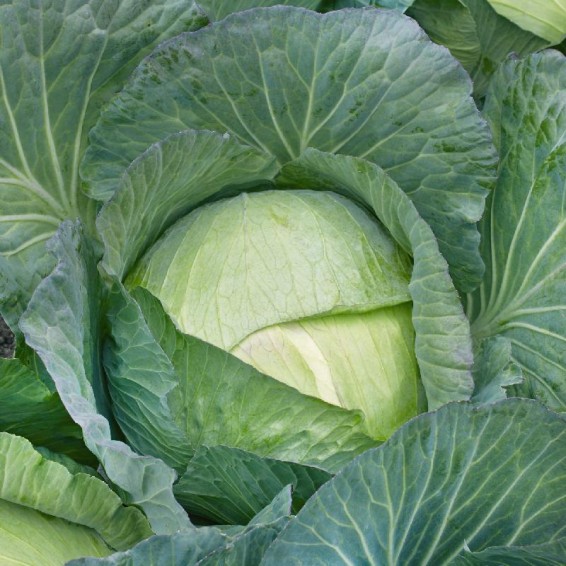Organic All Seasons Cabbage Seeds
Brassica oleracea
- HOW TO GROW
- FAST FACTS
HOW TO GROW
Sowing: Start your seeds inside 8-12 weeks before the last spring frost, planting them in rich soil 1/2 inch deep. Because the first crop of cabbage should mature before the heat of summer, plant your seedlings about 4 weeks before the last expected frost; set them in rows 3-4' apart, burying the stems about halfway up. For a fall crop, direct sow or transplant seedlings in midsummer. For companion planting benefits, plant cabbage with aromatic herbs or potatoes; avoid planting them with tomatoes or pole beans. Herbs such as thyme, peppermint, sage, and rosemary will repel the destructive white cabbage moth.
Growing: If hard frosts come, cover the young plants. Mulch around them to regulate soil temperature, and keep the soil moisture even to prevent the cabbages from splitting. This variety of cabbage has excellent resistance to splitting and yellowing, as well as being an excellent choice for spring, summer, and fall crops.
Harvesting: Harvest the cabbages as soon as they feel firm and reach a good size. Small cabbages tend to be more tender, while large cabbages from fall growth keep well over the winter.
Seed Saving: Late in the fall, mulch at least six different cabbage plants to ensure genetic diversity. If the climate is cold, digging up the entire plant and storing it over the winter will be necessary - keep it in moist sand at a temperature of about 40 degrees F. Replant 4-6 weeks before the last spring frost. If the heads are still firm, cut a deep X in the top to provide an easier exit for the stem. The stem will grow about 4-5' tall, with many four petaled yellow flowers. Allow the flowers to mature; when the seed pods form, pick them and allow them to dry. Remove them from the pods and store them in a dry, cool place for up to five years.
FAST FACTS
Latin Name: Brassica oleracea
Type: Open Pollinated, Heirloom, Cool Season
USDA Zones: 3, 4, 5, 6, 7, 8, 9, 10, 11, 12
Seeds per Ounce: 7,000
Planting Method: From Transplant
Sunlight: Full Sun
Height: 16 Inches
Color: Green
DESCRIPTION
HOW TO GROW
Sowing: Start your seeds inside 8-12 weeks before the last spring frost, planting them in rich soil 1/2 inch deep. Because the first crop of cabbage should mature before the heat of summer, plant your seedlings about 4 weeks before the last expected frost; set them in rows 3-4' apart, burying the stems about halfway up. For a fall crop, direct sow or transplant seedlings in midsummer. For companion planting benefits, plant cabbage with aromatic herbs or potatoes; avoid planting them with tomatoes or pole beans. Herbs such as thyme, peppermint, sage, and rosemary will repel the destructive white cabbage moth.
Growing: If hard frosts come, cover the young plants. Mulch around them to regulate soil temperature, and keep the soil moisture even to prevent the cabbages from splitting. This variety of cabbage has excellent resistance to splitting and yellowing, as well as being an excellent choice for spring, summer, and fall crops.
Harvesting: Harvest the cabbages as soon as they feel firm and reach a good size. Small cabbages tend to be more tender, while large cabbages from fall growth keep well over the winter.
Seed Saving: Late in the fall, mulch at least six different cabbage plants to ensure genetic diversity. If the climate is cold, digging up the entire plant and storing it over the winter will be necessary - keep it in moist sand at a temperature of about 40 degrees F. Replant 4-6 weeks before the last spring frost. If the heads are still firm, cut a deep X in the top to provide an easier exit for the stem. The stem will grow about 4-5' tall, with many four petaled yellow flowers. Allow the flowers to mature; when the seed pods form, pick them and allow them to dry. Remove them from the pods and store them in a dry, cool place for up to five years.
FAST FACTS
Latin Name: Brassica oleracea
Type: Open Pollinated, Heirloom, Cool Season
USDA Zones: 3, 4, 5, 6, 7, 8, 9, 10, 11, 12
Seeds per Ounce: 7,000
Planting Method: From Transplant
Sunlight: Full Sun
Height: 16 Inches
Color: Green





